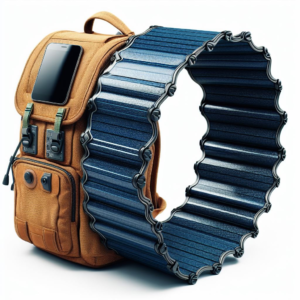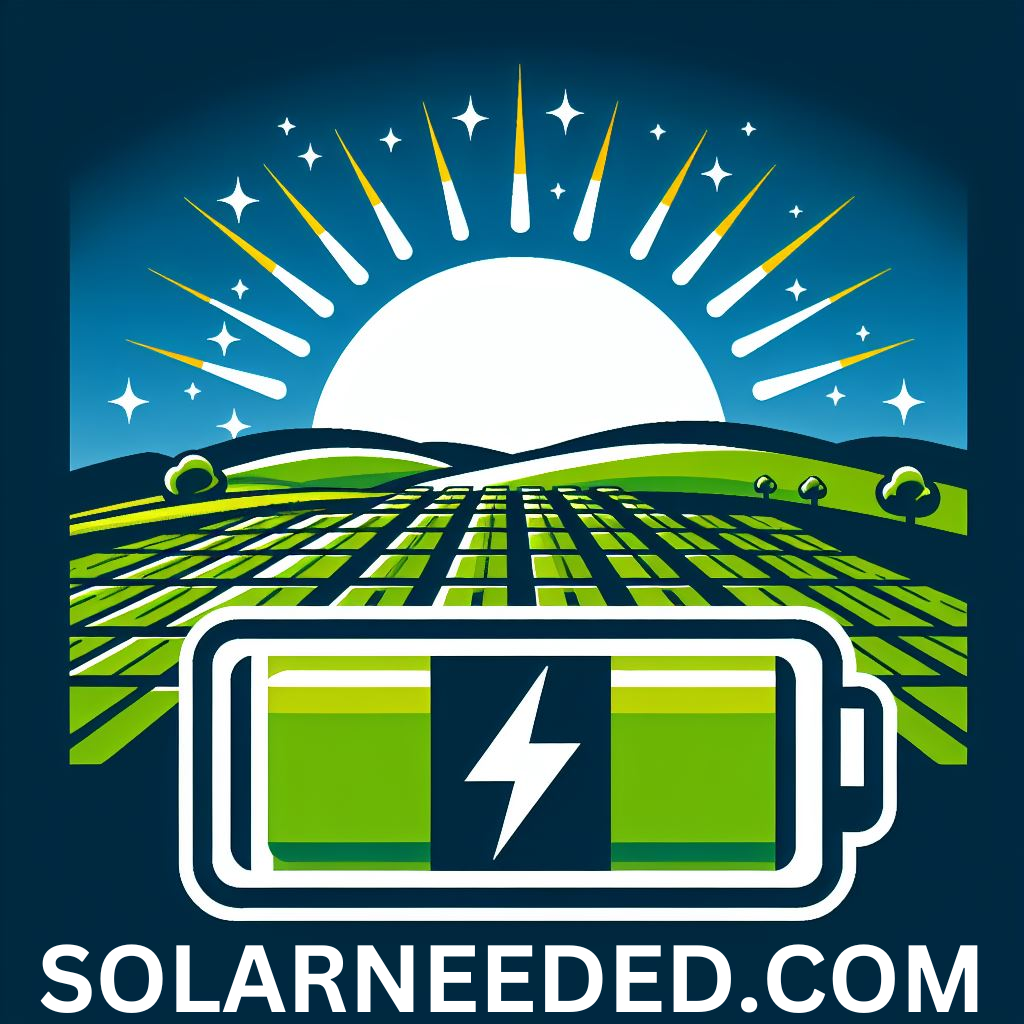Power On The Go
In a world where technology is ever-present and our reliance on electricity is continuously growing, having a reliable source of power on the go is becoming more crucial than ever. This is where flexible solar panels come into play, revolutionizing the way we charge our devices while we’re on the move.
With their lightweight and portable design, flexible solar panels offer a flexible solution to traditional bulky solar panels. They can easily be rolled up or folded, making them convenient to carry in a backpack or suitcase. Whether you’re hiking in the mountains, camping in the wilderness, or sailing on a boat, these panels provide a reliable source of power to keep your devices charged and operational.
Not only are flexible solar panels changing the game for outdoor enthusiasts, but they are also making a significant impact in remote communities and developing countries. These communities often lack access to electricity, making it difficult to power essential devices such as lights or medical equipment. However, with the introduction of flexible solar panels, these communities now have a sustainable and efficient solution to meet their energy needs.
With their flexibility, efficiency, and portability, flexible solar panels are truly game-changers in the world of power generation, allowing us to harness the sun’s energy wherever we go. So, whether you’re an outdoor adventurer, a remote community in need, or simply looking to reduce your carbon footprint, these panels are a powerful solution to meet your energy needs.

Advantages of flexible solar panels
Flexible solar panels offer a range of advantages over their traditional counterparts. Firstly, their lightweight design makes them easy to carry and transport. Unlike rigid solar panels, which can be bulky and heavy, flexible solar panels can be rolled up or folded, allowing for easy storage and portability. This makes them ideal for outdoor activities such as camping, hiking, or boating, where space and weight are at a premium.
Secondly, flexible solar panels are highly efficient in converting sunlight into electricity. The advanced technology used in the manufacturing of these panels ensures maximum energy conversion, even in low-light conditions. This means that you can still charge your devices even on cloudy days or in shaded areas.
Additionally, flexible solar panels are durable and long-lasting. They are made from high-quality materials that are resistant to extreme weather conditions, such as rain, snow, or heat. This makes them suitable for use in various outdoor environments, ensuring that they can withstand the rigors of outdoor adventures.
Types of flexible solar panels
There are several types of flexible solar panels available in the market today. The most common ones are:
- Thin-Film Solar Panels: These panels are made using a thin layer of photovoltaic material, such as amorphous silicon or cadmium telluride. They are lightweight, flexible, and have a low-profile design, making them suitable for various applications.
- CIGS Solar Panels: CIGS stands for copper indium gallium selenide, which is the semiconductor material used in these panels. CIGS solar panels are highly efficient and can be manufactured in various sizes and shapes to suit different needs.
- Organic Solar Panels: Also known as organic photovoltaics (OPV), these panels are made from organic materials, such as polymers or small molecules. Organic solar panels are lightweight, flexible, and can be produced using low-cost manufacturing techniques.
Each type of flexible solar panel has its own unique characteristics and advantages. It’s important to consider your specific needs and requirements when choosing the right type for your application.
How flexible solar panels work
Flexible solar panels work on the same principle as traditional solar panels. They harness the energy from sunlight and convert it into electricity using photovoltaic cells. However, the construction and materials used in flexible solar panels allow for greater flexibility and portability.
The photovoltaic cells in flexible solar panels are made from semiconducting materials that have the ability to convert sunlight into electricity. When sunlight hits the cells, it excites the electrons in the material, creating a flow of electric current. This current is then captured and stored in a battery or used directly to power devices.
The flexibility of these panels is achieved through the use of thin-film technology. The semiconducting material is deposited onto a flexible substrate, such as plastic or metal, allowing the panel to be bent or curved without damaging the cells. This flexibility enables the panels to be used in a wide range of applications and environments.
Applications of flexible solar panels
Flexible solar panels have a wide range of applications due to their lightweight and portable design. Some of the common applications include:
- Outdoor Adventures: Whether you’re hiking, camping, or boating, flexible solar panels provide a reliable source of power to keep your devices charged. You can use them to charge your smartphones, tablets, GPS devices, or even power small appliances like portable fridges or LED lights.
- RVs and Boats: Flexible solar panels are ideal for recreational vehicles (RVs) and boats, where space is limited. They can be easily mounted on the roof or attached to the sides, providing a continuous source of power for lighting, appliances, and other electrical needs.
- Remote Locations: Flexible solar panels are a game-changer for remote communities and developing countries that lack access to electricity. These panels can be used to power essential devices such as lights, medical equipment, or communication devices, improving the quality of life for these communities.
- Emergency Power: In case of power outages or natural disasters, flexible solar panels can provide a reliable source of emergency power. They can be used to charge phones, radios, or other essential devices, ensuring that you stay connected and informed during critical situations.
Benefits of using flexible solar panels
Using flexible solar panels offers several benefits beyond their portability and convenience. Some of the key benefits include:
- Sustainability: Flexible solar panels harness the sun’s energy, which is a renewable and clean source of power. By using these panels, you reduce your reliance on fossil fuels and contribute to a greener and more sustainable future.
- Cost Savings: While the initial cost of installing flexible solar panels may seem high, they provide long-term cost savings. By generating your own electricity, you can reduce or eliminate your monthly electricity bills, saving you money in the long run.
- Low Maintenance: Flexible solar panels require minimal maintenance compared to traditional solar panels. They do not have any moving parts and are made from durable materials, reducing the need for regular maintenance or repairs.
- Versatility: The flexibility and portability of these panels make them versatile for various applications. They can be easily transported and used in different environments, giving you the freedom to generate power wherever you go.
Installation and maintenance of flexible solar panels
Installing flexible solar panels is a relatively straightforward process. Here are some key steps you may want to consider:
- Choose the Right Location: Select a location that receives maximum sunlight throughout the day. This will ensure optimal energy generation and efficiency.
- Prepare the Surface: Clean the surface where you plan to install the panels, ensuring it is free from dirt, debris, or any obstacles that may obstruct sunlight.
- Mounting Options: Flexible solar panels can be mounted using adhesive backing, grommets, or zippers, depending on the specific design. Follow the manufacturer’s instructions for proper installation.
- Wiring and Connection: Connect the panels to a charge controller or an inverter to regulate the electricity flow and convert it into a usable form. Consult an electrician if you’re unsure about the wiring process.
To maintain the efficiency and longevity of your flexible solar panels, regular cleaning is recommended. Use a soft cloth or sponge with mild detergent and water to remove any dirt or grime.
WARNING: The use of abrasive materials and/or harsh chemicals may damage the surface of the panels resulting in underperformance, and may even void your warranty. Check with your manufacturer or retailer for more details.
Cost considerations and return on investment
The cost of flexible solar panels can vary depending on the type, size, and brand. While they may be initially more expensive than traditional solar panels, it’s important to consider the long-term cost savings and return on investment.
Flexible solar panels provide a sustainable and cost-effective solution for generating electricity. By reducing or eliminating your reliance on grid electricity, you can save money on your monthly energy bills. Additionally, some governments and organizations offer incentives and rebates for installing solar panels, further reducing the overall cost.
When calculating the return on investment, consider factors such as the initial cost, energy savings, and the lifespan of the panels. Most flexible solar panels have a lifespan of 10-25 years, ensuring a significant return on investment over their lifetime.
Innovations in flexible solar panel technology
The field of flexible solar panel technology is continually evolving, with ongoing research and development leading to exciting innovations. Some of the recent advancements include:
- Increased Efficiency: Researchers are constantly working on improving the efficiency of flexible solar panels, allowing for higher energy conversion rates and increased power output.
- Flexible Batteries: Flexible batteries that can be integrated with the panels are being developed, enabling a more compact and integrated power generation and storage solution.
- Printable Solar Panels: 3D printing techniques are being used to create flexible solar panels, making the manufacturing process more efficient and cost-effective.
- Wearable Solar Panels: Flexible solar panels are being integrated into clothing and accessories, allowing users to generate power while on the move.
These innovations are pushing the boundaries of what flexible solar panels can achieve, opening up new possibilities for power generation and usage.
10 Top Rated Flexible Solar Panels On the Market (2024)
(Presented in no particular order)
| Brand/Model | Power Output | Efficiency | Durability | Flexibility | Price (approx.) |
| Renogy 100 Watt 12 Volt Flexible Monocrystalline | 100W | 17-18% | High | Up to 248 degrees | $120-$150 |
| SunPower 50 Watt Flexible | 50W | Up to 23% | Very High | Up to 30 degrees | $200-$250 |
| Go Power! 100 Watt Flexible | 100W | 16-17% | Good | Moderate | $150-$200 |
| BougeRV Yuma 200W CIGS Flexible | 200W | 15-16% | Very High | Up to 360 degrees | $600-$700 |
| HQST 100W 12V Monocrystalline | 100W | 17-18% | Moderate | Good | $100-$120 |
| RichSolar 100W Flexible | 100W | 16-17% | Good | Moderate | $130-$160 |
| Dokio 110W 18V Flexible | 110W | 17-18% | Moderate | Good | $120-$150 |
| ACOPower 120W Foldable | 120W | 18-19% | High | N/A (foldable) | $200-$250 |
| XINPUGUANG 100W Flexible | 100W | 17-18% | Moderate | Good | $90-$120 |
| EcoFlow 100W Flexible | 100W | 22-23% | High | Very Flexible | $200-$230 |
Overview
The table offers a selection of flexible solar panels showcasing varying levels of power output, efficiency, durability, flexibility, and pricing–important factors to consider when making a purchase decision.
Key Takeaways
- Power Output: Power output (measured in watts) is directly related to how much electricity the panel can produce. Options range from 50W (SunPower) up to an impressive 200W (BougeRV). Generally, more power = a faster rate of charging batteries and supporting appliances.
- Efficiency: Efficiency dictates how well the panel converts sunlight into usable electricity. The higher the percentage, the more power the panel produces from the same area of sunlight. The most efficient are SunPower (up to 23%) and EcoFlow (22-23%)
- Durability: This relates to how well a panel will resist wear, tear, and harsh weather. Notably durable options include ‘very high’ for SunPower and BougeRV and ‘high’ for Go Power! Durable panels are especially important for marine, RV, or other exposed installations.
- Flexibility: Key for uneven or curved surfaces, this is defined by the degrees the panel can bend. BougeRV offers the greatest flexibility (up to 360 degrees), making it ideal for unique installs.
- Price: Varies drastically across brands. The ‘budget-friendly’ options fall below $150 (HQST, XINPUGUANG, select Renogy). The most expensive include the high-tech BougeRV ($600+).
Factors to Consider Beyond the Table:
- Weight and Size: Consider both in terms of portability and suitability for your space.
- Warranty: A significant warranty speaks to a manufacturer’s confidence in their product.
- Features: Some have built-in charge controllers, unique connectors, or mounting options.
Choosing the Right Panel
The best panel for you depends on several factors:
- Power Needs: Do you need to run large appliances or just charge small devices?
- Installation Surface: Does it need to be highly flexible or is a moderate bend ok?
- Budget: Are you looking for the best efficiency & durability regardless of cost? Or just basic functionality on a budget?
Important Notes:
- Prices given are approximate and change with time and retailers.
- Some highly flexible panels use efficient but thinner CIGS technology (BougeRV) while others are standard monocrystalline. This can impact weight, durability, and cost.
Conclusion: The future of flexible solar panels
Flexible solar panels have changed the game when it comes to on-the-go power generation. Their lightweight, portable, and flexible design make them versatile for a wide range of applications, from outdoor adventures to remote communities.
As technology continues to advance and research in the field progresses, we can expect to see even more efficient and innovative flexible solar panel solutions. The future of flexible solar panels holds the promise of a greener, more sustainable world, where clean and renewable energy is accessible to all.
So, whether you’re an outdoor enthusiast looking for a reliable power source during your adventures, a remote community in need of electricity, or simply someone who wants to reduce their carbon footprint, flexible solar panels are undoubtedly the way to go. Harness the power of the sun and embrace the flexibility of these panels to power your life wherever you go.



Leave a Reply